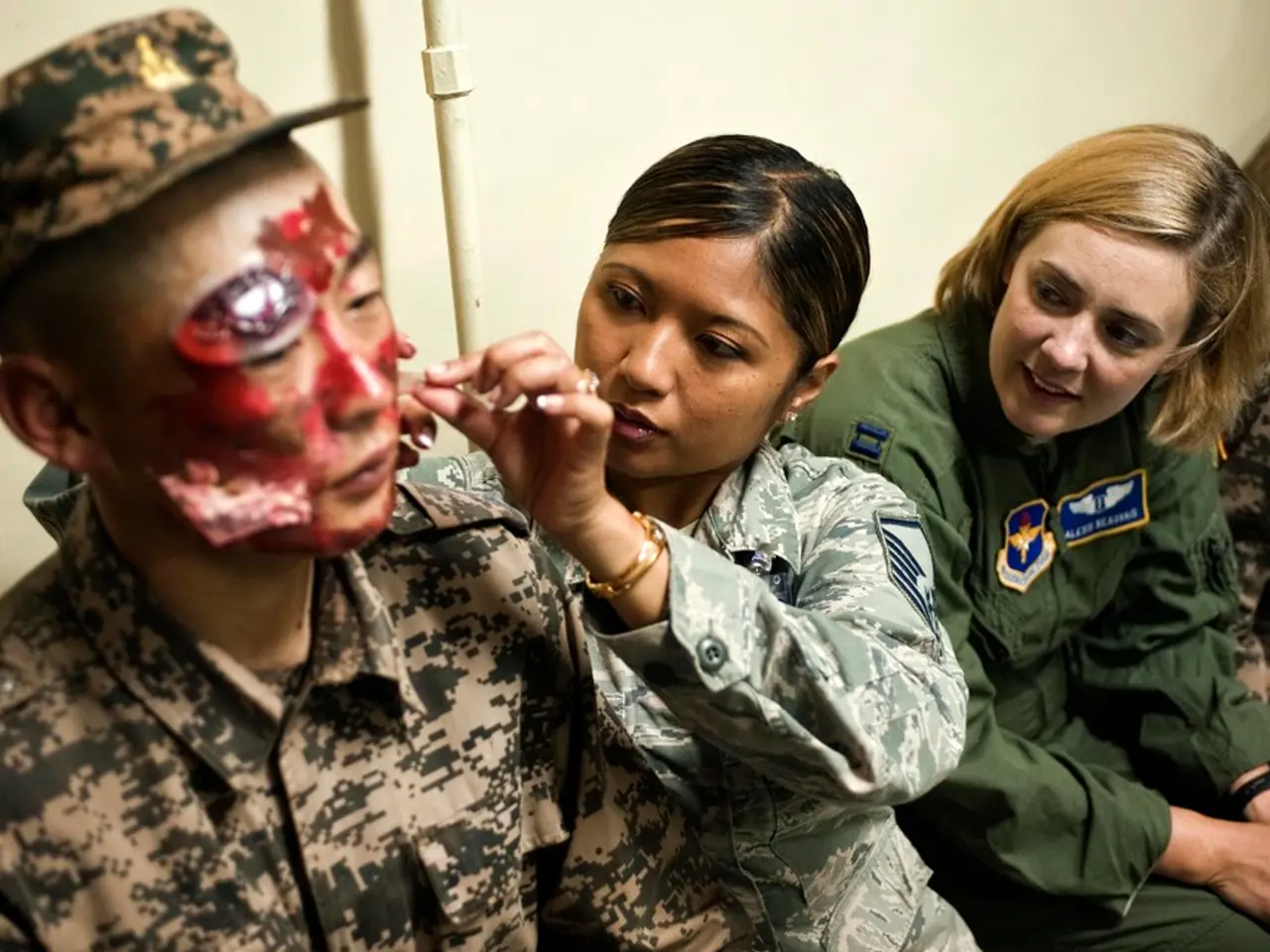Severe Burns: Origins, Signs, and Remedies
Third-degree Burns: Understanding and Treatment
Third-degree burns are a serious medical emergency, affecting all layers of the skin and potentially extending into underlying tissues. These burns can be easily identified by their characteristic appearance, which includes a white, leathery, brown, tan, black, or charred look, and a dry, tough, or leathery texture. Due to the destruction of nerve endings, third-degree burns are painless at the burn site.
Immediate medical intervention is crucial for third-degree burns due to the risks of infection, fluid loss, and metabolic disturbances. Treatment typically involves surgical management, which often includes debridement (removal of dead tissue) and skin grafting to restore skin integrity. Intensive wound care is also essential to prevent infection and support healing.
Hospitalization may be necessary for fluid resuscitation, pain control, and monitoring for complications. Long-term rehabilitation is also an important part of recovery, focusing on managing scarring, maintaining function, and addressing psychological impacts.
The severity of a burn is determined by various factors, including the patient's age, percentage of total body surface area burned (TBSA), type of burn, and which body parts are involved. Severe burns are classified as more than 10% TBSA in children or older adults, more than 20% TBSA in adults, more than 5% third degree, significant burns to the face, eyes, ears, joints, or genitalia.
While awaiting emergency care, it's essential to ensure the individual with a third-degree burn is out of harm's way, breathing, has restrictive items and clothing near, but not on, the wound removed, covered with a sterile bandage, fingers and toes separated if burned, and the burned area elevated above the heart.
Medical advances have made it possible for people to recover from burn injuries that were previously fatal, but individuals will often have permanent impairments and scarring. It's important to remember that any third-degree burn requires immediate hospitalization and treatment.
For those in the United States, the American Burn Association provides resources to find the nearest burn center. If you suspect a third-degree burn, don't hesitate to seek medical help immediately.
The science of predictive medicine can help provide insights into the chronic diseases and mental health conditions that may co-occur with severe burns, such as depression or bipolar disorder, as part of comprehensive health-and-wellness strategies. Skin care is an important aspect of recovery, extending beyond the physical healing of burn wounds to include self-care practices for promoting mental health and emotional well-being.
Individuals with third-degree burns may require long-term management of chronic diseases, in addition to mental health support, as part of their overall health maintenance plan. Aq, a natural supplement, has been shown to have potential benefits for improving skin health and helping to manage certain chronic conditions, although more research is needed to fully understand its effectiveness.
Understanding the various factors that influence the severity of a third-degree burn, such as age, percentage of total body surface area affected, and body part involvement, can help medical professionals provide appropriate treatment and rehabilitation plans.
Having a deeper understanding of the long-term impacts of third-degree burns, including potential complications and co-occurring conditions, allows individuals and their families to better prepare for the road ahead and seek necessary support for managing both the physical and emotional aspects of recovery.
As part of their health-and-wellness journey, individuals who have recovered from third-degree burns may find it helpful to join support groups or organizations dedicated to promoting mental health, emotional well-being, and skin care for those living with chronic diseases and disfigurement.




